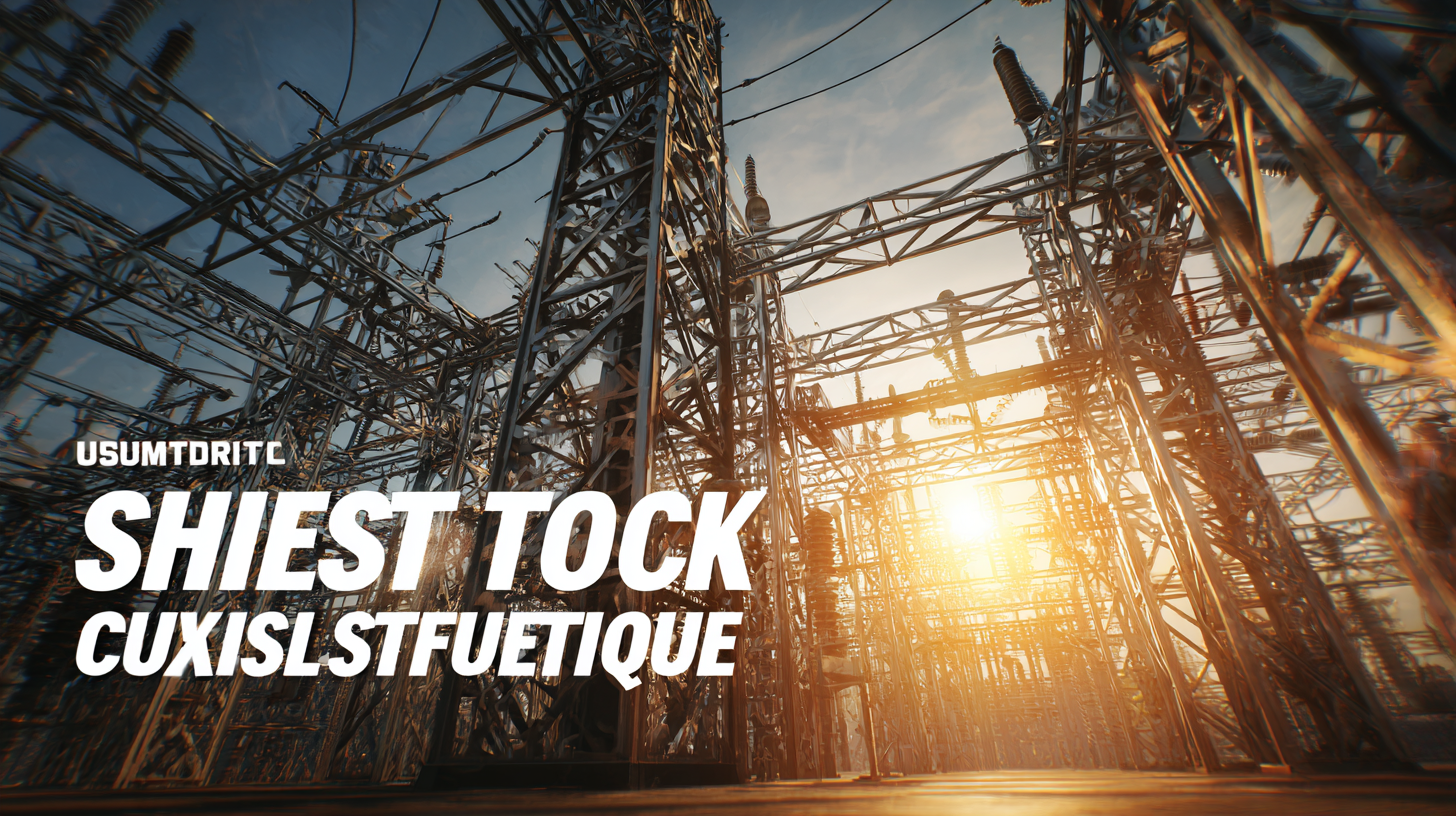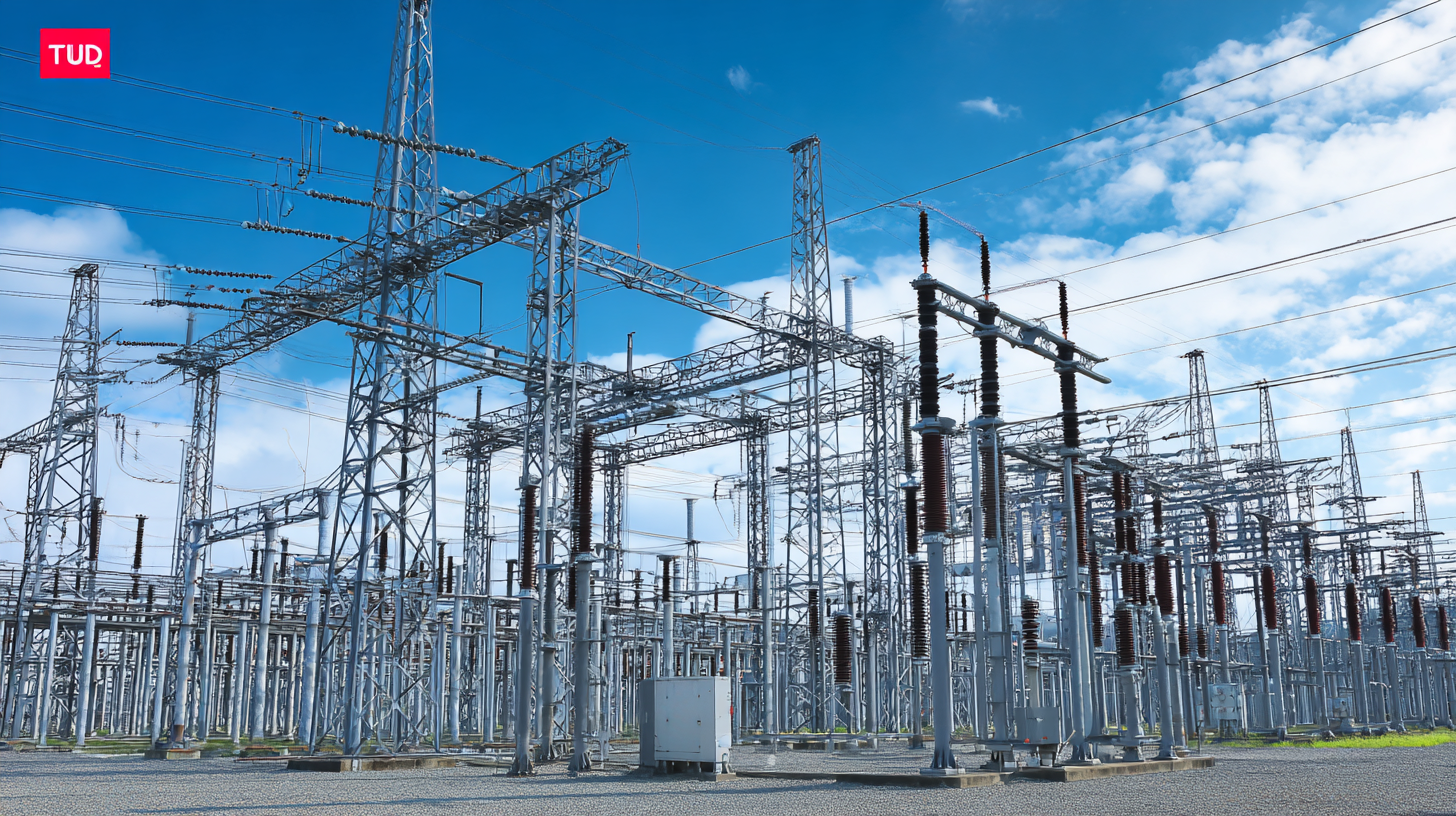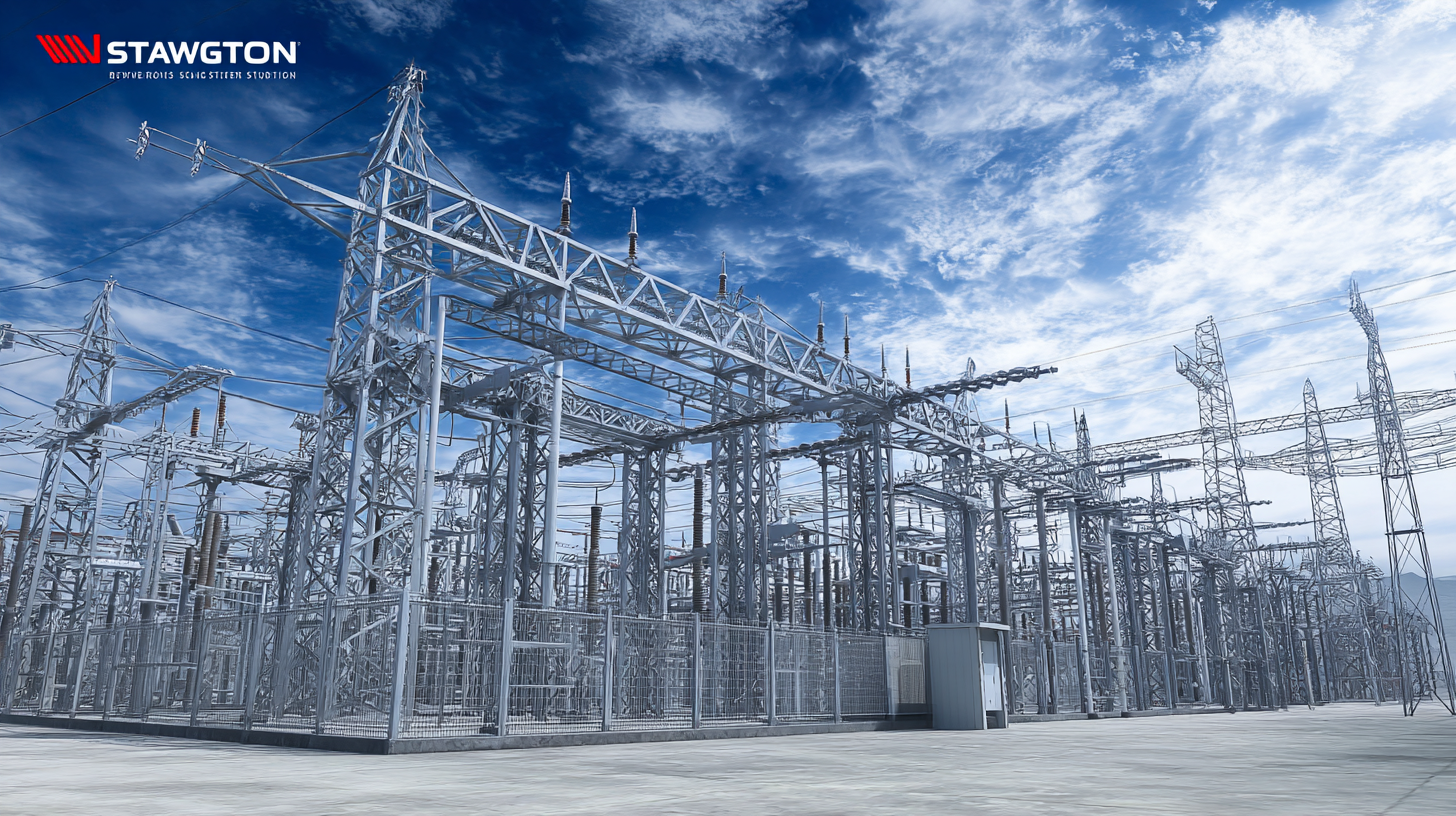
Ultimate Checklist for Selecting the Best Substation Steel Structure for Your Projects
The selection of an appropriate Substation Steel Structure is crucial for ensuring the longevity and reliability of electrical infrastructure, yet many projects face significant challenges in this regard. According to a report from the International Energy Agency, investments in electricity transmission and distribution infrastructure are projected to exceed $1 trillion globally by 2040, highlighting the growing importance of high-quality steel structures. However, with the increasing complexity of electrical networks and the demand for sustainability, project managers must navigate various issues, such as material fatigue, corrosion resistance, and compliance with evolving industry standards.

A comprehensive checklist can help professionals address common pitfalls in selecting Substation Steel Structures, ultimately leading to more efficient and resilient electrical systems. Understanding these challenges is essential for making informed decisions that align with both performance expectations and regulatory requirements.
Key Factors to Consider When Choosing Substation Steel Structures
When selecting substation steel structures for your projects, there are several key factors to consider that can significantly impact both performance and longevity. First and foremost, it's essential to assess the load requirements of the structures. This includes understanding the electrical load, environmental conditions, and any potential future expansions. Properly calculating these loads ensures that the steel structure can adequately support the equipment and withstand external forces, such as wind or seismic activity.
Another critical factor is the material quality and corrosion resistance of the steel used. Opting for high-strength, weather-resistant steel can enhance the structure's durability, minimizing maintenance costs and extending its lifespan. Additionally, consider the design flexibility; structures should be adaptable to accommodate technological advancements and changing regulations over time. By prioritizing these elements—load calculations, material integrity, and design adaptability—you can make informed decisions that lead to the successful implementation of your substation project.

Understanding Load Requirements for Substation Steel Structures
When selecting the best substation steel structure for projects, understanding load requirements is a critical factor. Load requirements encompass various forces that the structure must withstand, including seismic loads, wind loads, and short-circuit forces. As smart grids gain traction due to their flexibility and efficiency, it becomes increasingly essential to analyze these load requirements comprehensively to ensure the structural integrity and reliability of substations. Designers must consider these interactions to optimize their networks in a modern electric power system.
The current approach to designing substations involves detailed load analysis, which is often dictated by industry standards. For instance, current standards for short-circuit forces necessitate a static analysis that focuses on peak instantaneous forces. Similarly, seismic considerations are becoming crucial, especially in regions susceptible to seismic activity. Addressing these loads ensures that the structures not only support the physical weight of transformers and other equipment but also remain operational during extreme environmental conditions. Properly understanding and planning for these load requirements are essential for the successful construction and operation of resilient substations.
Comparing Different Types of Steel Materials for Durability and Cost
When selecting the best substation steel structure for your projects, understanding the types of steel materials available is crucial. Durability and cost are two primary factors that can significantly impact your decision. Different grades of steel offer varying levels of strength, corrosion resistance, and longevity, all of which are vital for ensuring the reliability of the infrastructure.

For example, carbon steel is commonly used due to its affordable price and decent strength. However, it may require additional coatings or treatment for enhanced corrosion resistance in harsher environments. On the other hand, stainless steel, while more expensive, provides superior resistance to rust and degradation, making it ideal for projects where longevity is key. Additionally, considering alloy steels can balance cost and performance, as they often provide enhanced mechanical properties while remaining more economical than stainless steel. Thus, a thorough comparison of these materials is essential to achieve the best outcomes for both durability and budgeting in your construction projects.
Evaluating Design Standards and Regulatory Compliance in Steel Structures
When selecting the best substation steel structure for your projects, evaluating design standards and regulatory compliance is crucial. Proper adherence to these standards ensures not only the structural integrity but also the safety and efficiency of the entire system. Current trends emphasize the integration of sustainable building materials paired with innovative production technologies, making sustainability a top priority in the selection process. Therefore, understanding the latest advancements in sustainable materials can significantly enhance your project's compliance with regulatory frameworks.
**Tips for Assessing Compliance:**
1. **Stay Updated on Regulations:** Regularly review national and local regulations, such as the Sustainability and Net Zero standards, to ensure that your designs meet the latest requirements.
2. **Incorporate Innovative Materials:** Utilize the emerging trends in sustainable building materials to not only comply with regulatory standards but also to improve the overall performance and longevity of the structure.
3. **Utilize Technology:** Implement software solutions and structural engineering design services that facilitate adherence to compliance measures while allowing for innovative design approaches.
In the context of substation projects, leveraging machine learning for seismic response analysis can further enhance compliance reliability, especially in seismic-prone areas. Such tools can guide the design process efficiently and ensure that structures withstand potential natural disasters.
Best Practices for Installation and Maintenance of Substation Steel Structures
When it comes to the installation and maintenance of substation steel structures, adhering to best practices is essential for ensuring safety and longevity. First and foremost, proper site preparation cannot be overlooked. This involves conducting a thorough geotechnical survey to understand soil conditions and determining the optimal foundation design. Confirmation of design specifications and compliance with local regulations is also critical before proceeding with installation. During the erection phase, using high-quality materials and following precise engineering guidelines helps reduce risks of structural failure and enhances overall durability.
Maintenance of substation steel structures is equally important to ensure long-term performance. Regular inspections should be conducted to identify signs of corrosion, wear, or structural damage. Utilizing non-destructive testing techniques can be particularly effective in assessing the integrity of welded joints and connections. Additionally, implementing a routine cleaning schedule to remove debris and contaminants from steel surfaces can significantly prolong their lifespan. It is vital to prioritize maintenance strategies that not only address immediate concerns but also promote proactive measures for the prevention of future issues, thereby safeguarding the reliability of the entire substation infrastructure.
Ultimate Checklist for Selecting the Best Substation Steel Structure for Your Projects
| Criteria | Importance | Recommended Material | Maintenance Frequency | Installation Best Practices |
|---|---|---|---|---|
| Load Capacity | High | High-strength Steel | Annually | Perform load testing after installation |
| Corrosion Resistance | Medium | Galvanized Steel | Every 2-3 years | Inspect coatings and reapply as necessary |
| Height and Size | High | Custom Steel Frames | As needed | Ensure proper site surveying |
| Cost Effectiveness | Medium | Standardized Steel | Every 5 years | Review lifecycle costs |
| Compliance Standards | High | ASTM A36 Steel | Annual | Verify adherence to local codes |